Life inside Blackpool's Covid intensive care unit where four people are dying every day
and live on Freeview channel 276
Dr Jason Cupitt, who was invited to help with last year’s Illuminations Switch-On due to his role on the coronavirus frontline, spoke as medics at the Victoria Hospital continue to put themselves in harm’s way to treat an army of the ill, with the town in the eye of the storm of the second wave.
With 20 to 25 Vic patients currently dying every week with the disease, many of whom remain conscious and terrified as they gasp for breath in their final moments, he said he finds it “sickening” when people downplay the impact of Covid-19 – or refuse to follow the restrictions put in place to save lives and stop the spread.
Advertisement
Hide AdAdvertisement
Hide Ad“From someone who sees the sick and dying patients on a daily basis, it just makes me very angry that people can still behave how they are behaving,” he said.
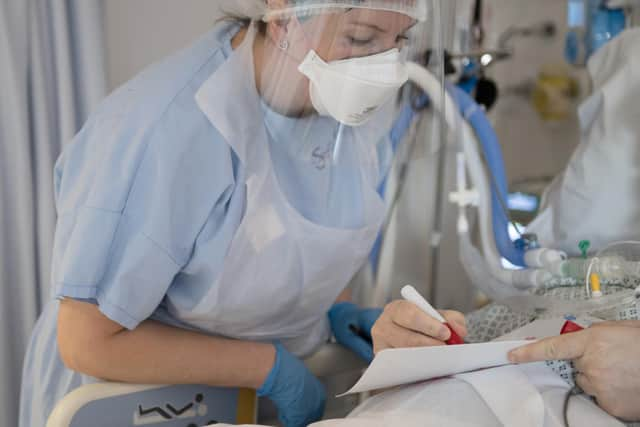

“This is not just young people not abiding by the rules and regulations, I have seen it across all age groups.
"As much as we can beg and plead about the ‘hands, face, space’ message, it just doesn’t seem to get across.
“It’s disheartening to know that people are behaving like they are. They almost don’t believe it’s a problem.”
Advertisement
Hide AdAdvertisement
Hide AdDr Cupitt, as well as the Vic’s chief executive Kevin McGee, sat down for an interview with The Gazette as medical photographer Chimane Moore went inside the Covid intensive care unit, which has doubled in size to hold 32 beds amid a surge in demand, to show people what life is really like there.
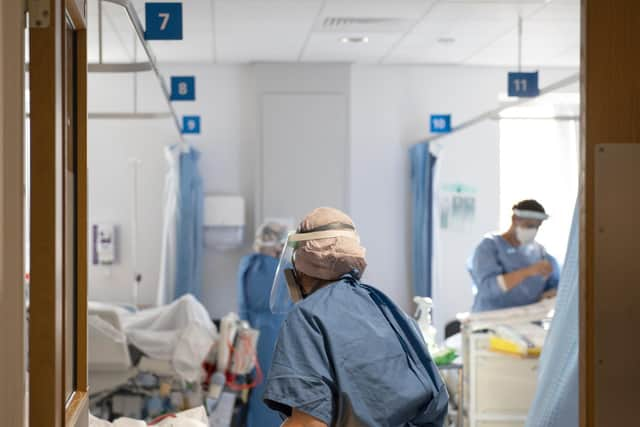

Describing the deaths of 636 people so far, Dr Cupitt said candidly: “The ones that are sedated and on ventilators – I don’t want this to sound wrong – are the easy ones because they are unaware of what’s happening to them.
"Clearly their families are aware and unfortunately they aren’t able to visit for various reasons, and that’s the situation we are used to.
“That’s intensive care and before Covid we saw that day in, day out – people unfortunately dying on ventilators.
Advertisement
Hide AdAdvertisement
Hide Ad“The really difficult ones – the emotionally challenging ones – are the ones that are awake and on CPAP [continuous positive airway pressure] masks or on oxygen of some sort and you have to have that conversation with them to let them know that they are not going to get better and they are going to die.
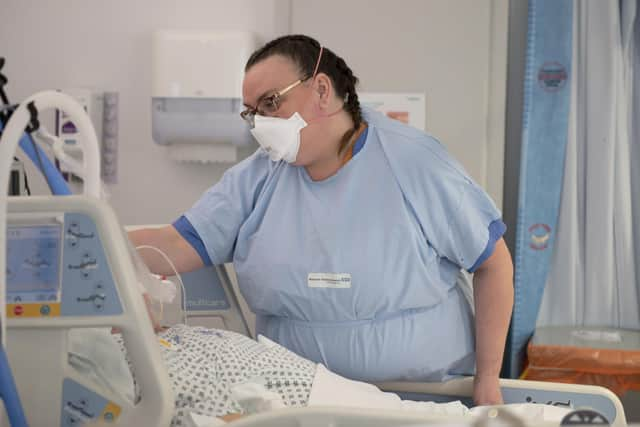

“That conversation is never easy. Some patients are terrified. Every patient reacts differently to it.
“I have seen patients on their mobile phone, talking to their relatives, basically saying, ‘I’ve had enough of this, I want to go, I want to die.’
"They will take their CPAP mask or their oxygen mask off.
"That’s a very brave thing to do and every time I see that it just fills me with all sorts of emotions, from the pride at having looked after that patient, to the upset of seeing that patient do that, and how brave they are to have that discussion with their family.
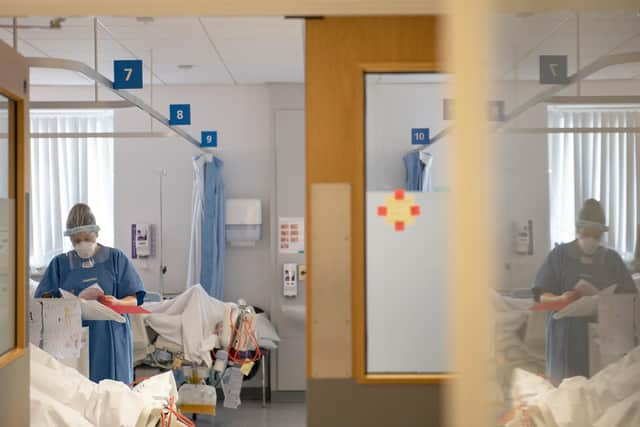

Advertisement
Hide AdAdvertisement
Hide Ad"And their family can’t see them – they are at the other end of the phone.
“We are seeing this too often now, and that’s the emotional turmoil our nurses are having to cope with.
“Quite often those nurses will go home and they don’t have anyone to talk to.”
The second wave has seen more younger people admitted to hospital, with a man in his 20s in intensive care as of yesterday, Dr Cupitt said.
Advertisement
Hide AdAdvertisement
Hide AdAnd he added: “We have seen a lot more in their 40s and 50s than we did during the first wave where they were predominantly in their 70s. This is not just a disease of the middle aged to elderly.
“This is a disease of any age and we are seeing young people becoming very sick with it, and that’s worrying when you see behaviours out there in the community.
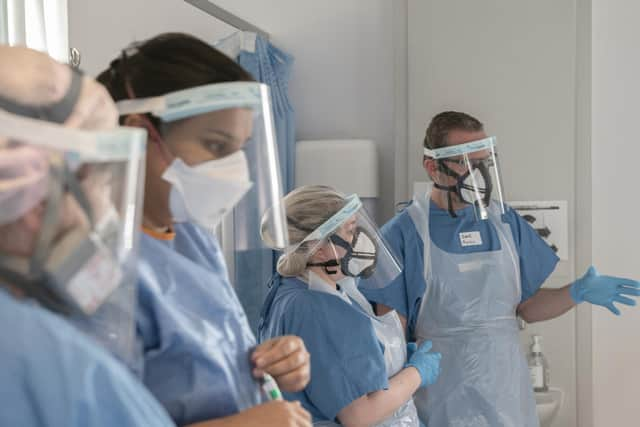

“Certainly the disease is associated with being overweight or obesity, but that’s not always the case and we are getting fit 50-60 year olds contracting the illness.”
Dr Cupitt said that, while staff have now come to see the heartbreaking sights of the pandemic as the “norm”, the early days were like a “war zone” – and that he worries for medics’ well-being once the battle is won.
Advertisement
Hide AdAdvertisement
Hide AdHe said: “Let’s not underestimate what, not just the critical care staff, but all NHS staff are going through to fight this disease, which has been around now for 12 months.
“It’s heavy physical work, moving and rolling patients, and turning them onto their front and onto their backs. It’s hard work if you think the majority of our nurses are relatively young, female nurses. It’s hard work.
“You add to that the emotional burden and the responsibility of looking after patients who are sat there with CPAP masks strapped to their face, struggling to breathe, on a daily basis, some of them who know that they are dying and you are trying to relieve their suffering, whose relatives can’t come to see them.
“I’d like to see Joe Public actually witness that for just five minutes, not for 12 months.
Advertisement
Hide AdAdvertisement
Hide Ad“And that’s the emotional burden that our staff are having to go through on a day-to-day-basis.”
Dr Cupitt added: “If you looked into the whites of their eyes, most of them are holding it together at the moment.
"But when the storm has settled and the tide has gone out and we go back to some sense of normality, I think we are going to hit a massive tsunami of PTSD [post-traumatic stress disorder].
"Once the fizz has settled and the adrenaline has settled, I think people will step back and relax, and I think a lot of them will have meltdowns.
Advertisement
Hide AdAdvertisement
Hide Ad“We are almost preparing for that time, when in a few months I think our incidents of mental health problems and psychological trauma are going to be huge.
“At the moment, we are all living and working at a heightened level of anxiety – our adrenaline is still buzzing around. When that’s settled, the true emotion will just come out.”
Mr McGee said: “Clearly Covid is affecting elderly people but we get a complete range of patients, from those you would say are relatively young and fit, so this pandemic has affected and can affect anybody.”
THE WHOLE HOSPITAL IS BEING HIT HARD
While intensive care units are grabbing the headlines, the pressure is being right felt across hospitals, Vic boss Kevin McGee said yesterday.
Advertisement
Hide AdAdvertisement
Hide Ad“Every part of the NHS is currently under stress and strain. Critical care is at the epicentre and it’s the end point of the disease but we have changed a number of our general medical wards over to Covid red wards, and the pressure of those wards is intense,” he said.
Around 150 Covid-positive patients are currently on those wards, A&E remains “busy” amid the typical winter pressures, and diagnostic services are said to be “under stress”.
“Our community services are working flat out because the only way we are keeping the hospital going is by being able to discharge patients in a very timely manner,” Mr McGee said.
Dr Cupitt added: “This is not just an illness, this is a highly infectious disease.
Advertisement
Hide AdAdvertisement
Hide Ad"Often you are not just cohorting people in various areas of the hospital – you have to be very careful where you put them – not just those with the disease but those who you suspect have the disease.”
Earlier this week, The Gazette revealed how up to 36 per cent of hospital cases were caught on the wards at some points late last year, though rapid Covid tests, which give results in minutes and not days, should help bring that figure down.
Dr Cupitt continued: “There’s added complexities in where you place patients.
"That 150 patients, if you think the average ward has around 20 to 30 patients, you are talking around six wards full of patients with Covid.
Advertisement
Hide AdAdvertisement
Hide Ad"In some hospitals across the country, that’s a third to a half, some are even filling up with Covid patients.
"I don’t think people realise enough you can have half your beds full of patients with Covid. And that’s a ridiculous situation.
"So it’s not just about critical care being full.”
Some routine operations have also been axed to free up beds.
SERIOUSLY ILL PATIENTS ARE BEING MOVED TO EASE PRESSURE AND BOOST CARE
Advertisement
Hide AdAdvertisement
Hide AdSeriously ill patients are being moved to different Lancashire hospitals to free up beds and ease pressure.
It’s risky and if people continue to be admitted to hospital for Covid treatment, they could face being sent right across the country – though it’s hoped that won’t happen.
Mr McGee said: “There are times when we’ve had to transfer intensive care patients between the various hospitals to manage pressure in our units, and that’s worked really well with hospitals supporting one another.
"What we’ve found across Lancashire, although we’ve all being going up over the last few weeks, it’s been differential in different areas, so three weeks ago east Lancashire was very much in the eye of the storm.
"That’s stabilised now.
Advertisement
Hide AdAdvertisement
Hide Ad"Blackpool then took over and just over the last few days numbers in Morecambe Bay have gone up.
Dr Cupitt added: “Moving critically ill patients in the back of an ambulance between hospitals is something we have always resisted, and has not been the norm over the past couple of decades.
"But it’s to enable that patient to get the best care possible.
“You’re moving them from a hospital that’s really, really struggling, either from [lack of] capacity or staffing, to another critical care unit where the staffing allows that patient to get the care they need.
Advertisement
Hide AdAdvertisement
Hide Ad“It’s not a decision we take lightly, but we do it in the best interests of the patient, accepting the small but not insignificant risk of the transfer process itself.”
It is thanks to our loyal readers that we can continue to provide the trusted news, analysis and insight that matters to you. For unlimited access to our unrivalled local reporting, you can take out a subscription here and help support the work of our dedicated team of reporters.
Comment Guidelines
National World encourages reader discussion on our stories. User feedback, insights and back-and-forth exchanges add a rich layer of context to reporting. Please review our Community Guidelines before commenting.